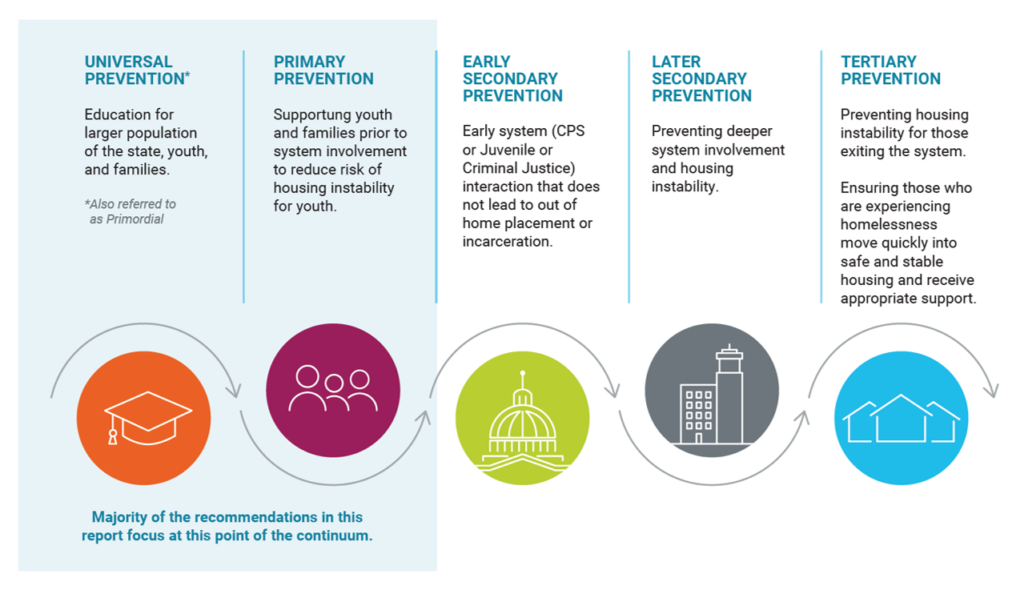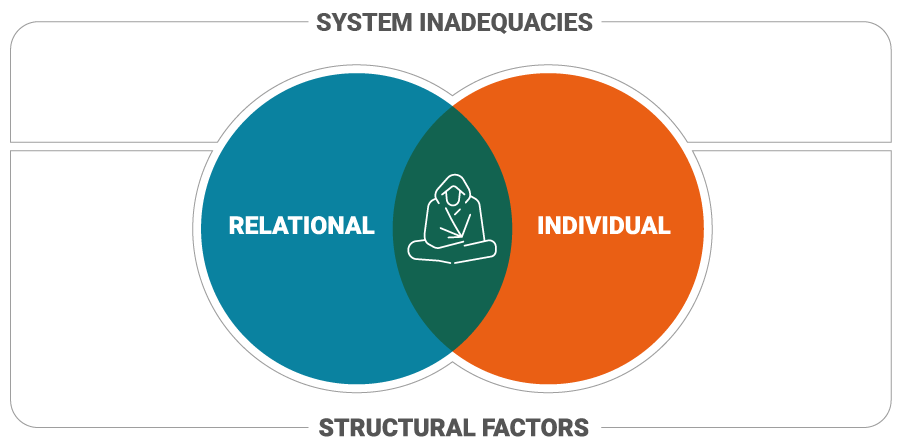Youth Homelessness Prevention
The Office of Homeless Youth’s (OHY) goal is to ensure safe and stable housing for all young people across the state of Washington so that they may thrive in the short and long term regardless of their location, age, race, ethnicity, neurodiversity, disability, gender identity or sexual orientation. In January of 2022, OHY co-hosted a webinar in partnership with the Steering Committee on Prevention of Youth Homelessness, Communities of Color Coalition (C3), and Innovations Human Trafficking Collaborative (IHTC), outlining some of the key recommendations elevated by lived experts in OHY’s strategic plan and the co-design process.
The 2020 Washington State Legislature and the Raikes Foundation each invested $75,000 to support the development of a draft strategic plan addressing the issue of youth homelessness and other related negative outcomes. The Office of Homeless Youth convened a workgroup of representatives from state agencies that touch young people’s lives, community-based organizations, and young people and families with lived experience of housing instability, child welfare involvement or justice system involvement. The preliminary plan outlines how existing prevention efforts in this area are coordinated, the demographics of young people who experience homelessness and housing instability within Washington State, the current funding landscape for prevention efforts, and recommendations on promising interventions and policy improvements related to youth homelessness prevention.
In November 2020, C3, IHTC, OHY collaborated to establish a Steering Committee on Prevention of Youth Homelessness. The Steering Committee is made up of youth lived experts between the ages of 15–30 who have experienced housing instability between ages 12–24, and caregivers (bio, kin, informal or foster) who have personal experience supporting Black, Indigenous and people of color (BIPOC), lesbian, gay, bisexual, trans, queer, two-spirit (LGBTQ2+), or young people with intellectual or developmental disabilities (I/DD)). Steering committee members represent urban, rural and Tribal areas of the state. Ninety-five percent (95%) of the group identifies as BIPOC The final strategic plan on the prevention youth and young adult housing instability, makes recommendations along four main pillars:
Supporting whole family well-being
Universal support for basic human rights
Eliminating racism in systems and supporting youth and families impacted by them
Shifting resources to Black, Indigenous and people of color communities
Prevention Framework

Understanding youth homelessness

Structural factors – Structural factors are large systemic issues that are intractable from an individual’s perspective. They include historic harms, practices, policies and processes that continue to impact communities today. Structural factors also determine the types of action that an individual can take in response to a problem or the range of actions that can they even consider.
49%
Of young people between 18-24 years are low income or experiencing poverty in Washington.
System failures – Systems include government agencies in charge of designing and implementing programs and services for people at the state and local level. System gaps occur when underlying needs of youth and families are not met through existing programs and services offered by the different agencies making up the larger set of systems.
2x
Black, Native, Pacific Islander/ Native Hawaiian youth are removed from their homes and placed in out of home care at two times the rate of their white peers.
Individual and relational factors – Individual factors are attributes at an individual level that affect a young person’s experiences. For example, a young person’s undiagnosed behavioral health issues will affect relational factors within the household, increasing family conflict and creating an environment resulting in the young person leaving the household or being kicked out. Relational factors such as the death of a care giver or domestic violence are interpersonal issues that can also negatively affect housing stability.
9,286
According to Division of Vocational Rehabilitation 9,286 young people (ages 14- 24) with disabilities were unstably housed in 2018
Are you a lived expert of youth homelessness or a caregiver supporting a young person who has or is experiencing homelessness.
We would like to stay connected with you.
Prevention of youth homelessness is a collaboration between:
For more information:
Do You Need Help?
If you or someone you know needs assistance, you can find help by using the 211 Washington Information Network.
If you are a young person who is thinking about running away or already has, you can talk to someone confidentially at the National Runaway Safeline: 1-800-RUNAWAY or 1-800-786-2929
Terms and definitions
Youth and young adults between the ages of 12-24 years.
Used interchangeably with young adults. Young people between the ages of 12-24 years.
Young people under the age of 30 years who have experienced housing instability between the ages of 12-24 years.
Parents, grandparents or chosen family whose youth have experiences housing instability.
Lived experts, community organization and the Office of Homeless Youth designing policy, services and solutions together.
State agency representatives who work at agencies such as foster care system, juvenile justice, behavioral health, disability administration, employment etc.



